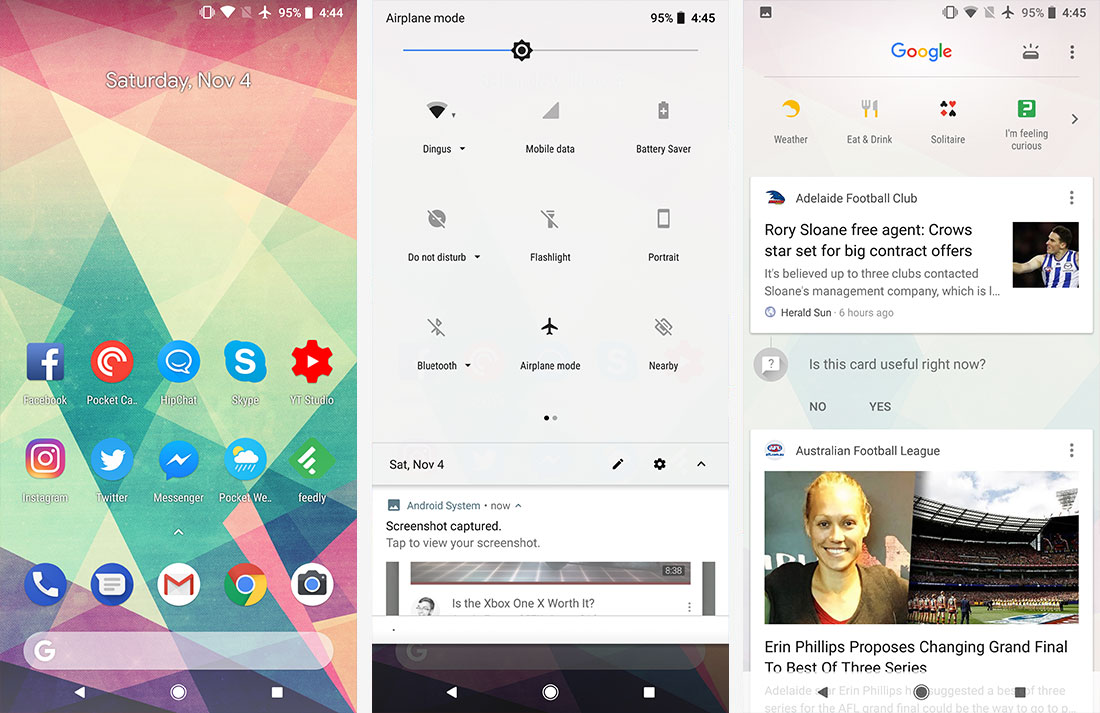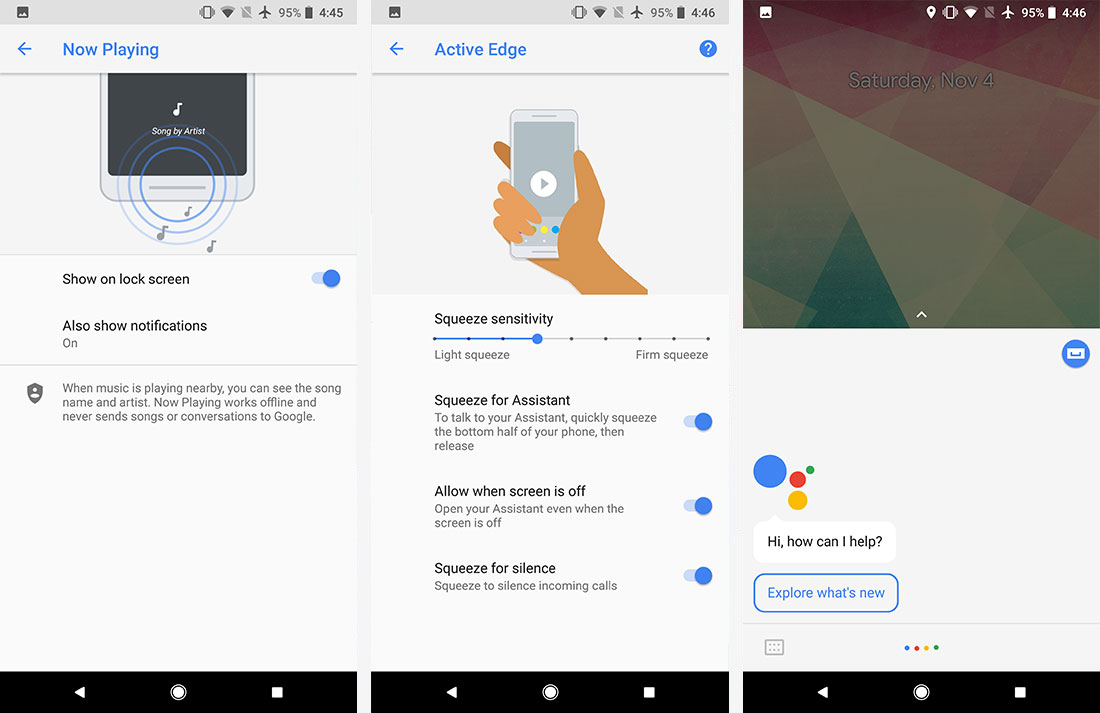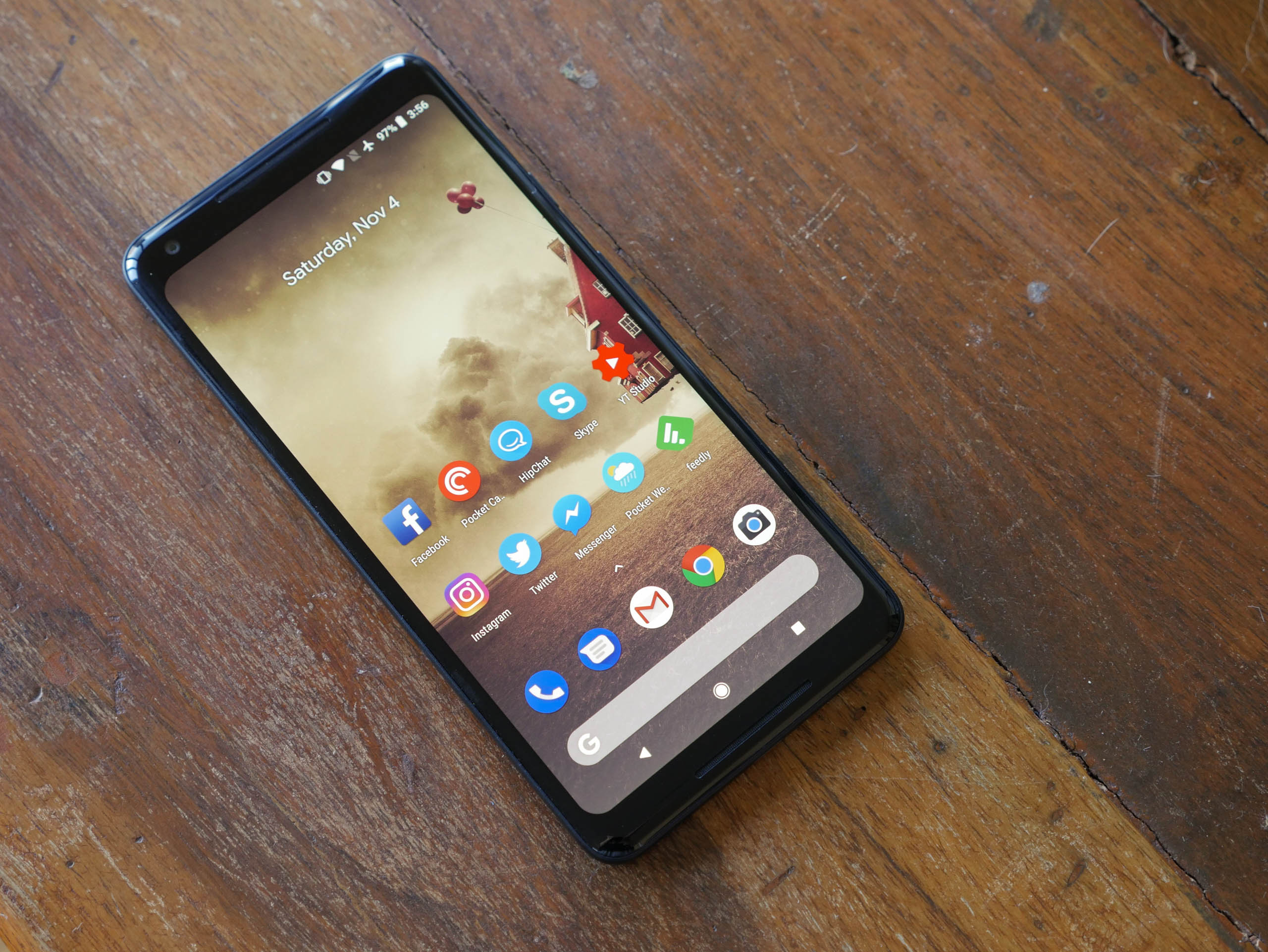Software
The Pixel 2 XL runs Android 8.0 Oreo out of the box, and many of the new features are part of this core Android experience. I won't be covering the new features of Android 8.0 in this review, because soon enough these features won't be unique to the Pixel line, and there are plenty of great Android 8.0 reviews on the internet. If you're interested in what Google has added to Oreo, I'd encourage you to read a specific Android 8.0 review.
Instead I'll be focusing mostly on the unique software components found on the Pixel 2 XL, and the general software experience Google provides. Spoiler alert: it's great.

Stock Android is still my favourite implementation of Android. It's fast and fluid, it isn't bogged down by unnecessary features or bloat, and the skin is consistent throughout the entire operating system and most of the apps in the Play Store. This is Google's vision for how Android should be, and as far as I'm concerned, it's the best you can get.
Using a Pixel phone comes with advantages that extend beyond just having a clean Android experience. Every Pixel phone gets new versions of Android first, whether through official OTA updates or through Google's beta program. When you have a Pixel, you can guarantee you are getting the latest and greatest features ahead of other Android users, and this keeps the phone feeling fresh and modern even a year after launch.
A great example of this is the original Pixel. I was using my Pixel XL just a few weeks before the Pixel 2 launch, and I was already rocking a developer preview of Android 8.0 (which was remarkably stable) complete with many of the features found in the new Pixel 2 XL. It didn't feel bogged down after a year of use, and most importantly, it felt supported and relevant even though its successor was right around the corner. You can expect a similar experience with the Pixel 2 line, which Google will support with software updates for at least three years.

You also get the bonus of monthly security patches, which Google does actually deliver to Pixel owners monthly. Most other OEMs delay these patches, take months to deploy them, or simply don't push them to users at all. This leaves the Pixel as the least vulnerable Android smartphone.
The Pixel 2 and Pixel 2 XL do come with some new and exclusive features. There's a handy always on display, showing the time and notifications at all times, which we've seen other OEMs implement before. However, unique to the Pixel 2 line is Now Playing, which automatically displays songs currently playing in the background on the always on display. This means you can often pull your phone out of your pocket, and it will already be telling you what song is playing in the café you're in. It's a neat feature.
Both the Pixel 2 XL and Pixel 2 come with squeezable edges, similar to the HTC U11. It works in basically the same way as the U11, in this case mapped to Google Assistant. This is another neat feature I find myself using on occasion, and its adjustable sensitivity means you can prevent it from accidentally activating. You can also use the "ok Google" voice command from any screen, even when the display is off, to bring up Assistant.

Google Lens is available in the Photos app on the Pixel. Essentially the successor to Google Goggles from the early days of Android, Lens analyses photos you capture and attempts to provide extra information, such as the name of the product, artwork or landmark in the frame. It works pretty well, though I'm sure with improved AI in the future, Lens will only get more clever over time. Oh and it can translate printed email addresses, phone numbers and URLs into actionable text, which is always useful functionality.
Other neat features worth a mention include HDR support for videos, and unlimited full-quality cloud photo storage through Google Drive until 2021.
